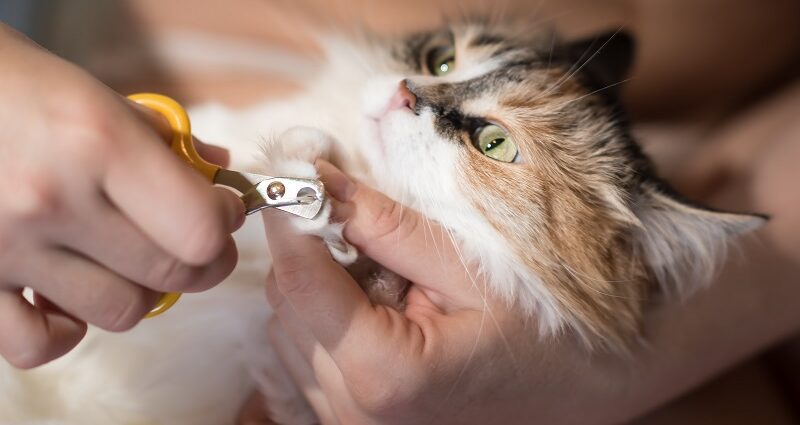Contents
Should a cat’s claws be cut?
Cat claws are sometimes a problem. They can cause damage to the environment of the cat (furniture, rugs, curtains, etc.) as well as to members of the family. Should we, however, cut them systematically?
How are the claws made?
The claws have a composition similar to that of the nails: their structure is different but they are mainly made up of keratin. In the center of the claw pass blood vessels and nerves. These do not continue to the end of the claw. This is why the cut with the tips of the claws is painless. The most peripheral part of the claw moults regularly. It is therefore not uncommon to find molts, resembling kinds of hollow, abandoned claws.
What are cats’ claws used for?
Claws have several roles in a cat’s life. Their main roles are to catch the preys and to allow them to climb. They are also used to defend against congeners or predators. They are indeed formidable weapons and the damage they can cause should not be underestimated.
Outside of the hunting or aggression phases, cats have the option of retracting their claws. This is a skill that most cats have. Taking them out to scratch surfaces takes on a visual and chemical marking role, with the concomitant deposition of pheromones. The action of clawing is also an opportunity to stretch the limbs and maintain the retraction mechanism, based on particular muscles and tendons. It also promotes shedding of the claws, just like grooming.
In what situations should I cut my cat’s nails?
As you can see, most cats don’t need us to cut their claws. The moult allows the renewal of the claws which wear out permanently during the phases of climbing and clawing, in particular. However, in certain situations, this treatment can be useful.
On the one hand, in some cases, clipping the claws is necessary to prevent mutilation. Indeed, in the event of severe itching, in allergic contexts for example, it can be very interesting to cut the claws of the cat which risks scratching with blood. In addition, in the event of abnormal implantation or growth of the claws, they sometimes curl and come to plant themselves in the skin of the cat. The regular cut is then no longer optional but essential.
On the other hand, the claws can be cut to limit damage to furniture and people or other animals. Once cut, the cat will gradually sharpen them again, but they will be less effective for a few days to a few weeks.
How do I cut my cat’s claws?
If the claws are transparent, and this is the case in the vast majority of cats, it is easy to locate the central vein. Spread the claw to be cut by pressing gently between the pads. Once the claw is well exteriorized and visualized, use a small claw cutter to sever the tip of the claw, at least 1 or 2 mm after the end of the vein. Proceed calmly and gently so as not to frighten the cat. Positive reinforcement with hugs or rewards (treats, kibble, etc.) is encouraged. It is also advisable to get cats used to them from an early age to limit the stress associated with cutting. Be careful, too frequent cutting can possibly weaken the claws which risk cracking.
What to remember
In conclusion, cutting the nails can be useful in some cases but is generally not necessary for the health of the cat. If the cut is complicated, an alternative may be the installation of “nail guards”. Easy to apply, with a glue provided, the small silicone cases cover the claws and last about 1 month. It is advisable to choose a suitable size and to check that the molting of the claws is carried out correctly. These two gentle methods are far preferable to the surgical removal of the claws practiced across the Atlantic and have serious consequences for the well-being of the cat. For any information, do not hesitate to contact your veterinarian who will be able to inform you.










